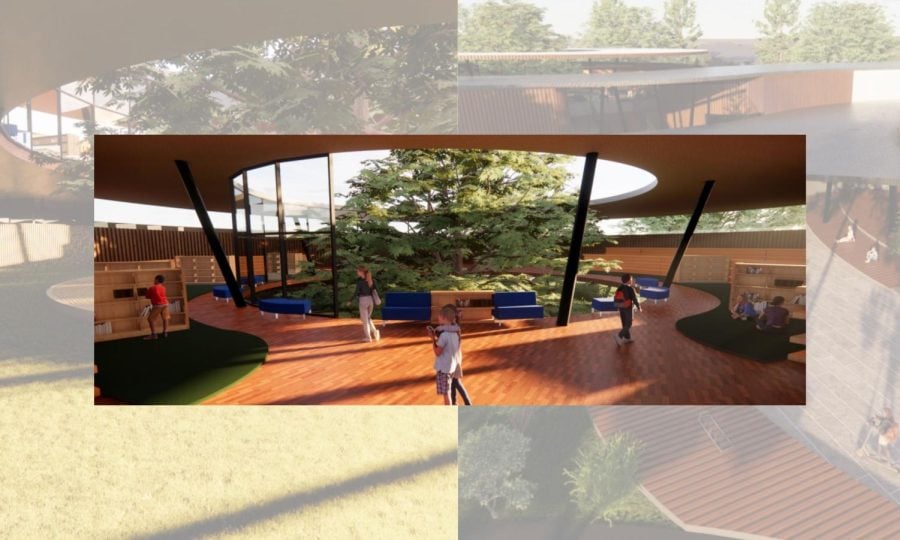Architecture minor bridges engineering and design, draws students of various backgrounds
Illustration by Beatrice Villaflor
A collage of architectural renderings by McCormick junior Hajra Malik, which she made as part of the Civil and Environmental Engineering 385: Design Studio sequence.
May 18, 2023
McCormick junior Hajra Malik signed up for Civil and Environmental Engineering 220: Structural Art to fulfill her major requirements. But, the class piqued her interest about how structures and art can coexist.
“A building’s aesthetic form can actually be performing a very specific function structurally,” Malik said. “I thought that was very interesting.”
The class ultimately inspired Malik to enroll in the Architectural Engineering and Design minor, an eight-course program of study to prepare students for further education in architecture.
Malik said the Civil and Environmental Engineering 385: Design Studio sequence is the “star” of the minor.
Each of the three design studio quarters focuses on a different structure. Students spend the ten weeks creating plans and renderings of a house, school and high-rise building.
At the end of the sequence, practicing architects on the AED faculty critique the students’ designs. Students interested in continuing with the minor take five additional courses.
While engineering homework typically has a correct answer, design offers more flexibility, Malik said. She finds designing architecture “more freeing” than the rest of her McCormick education.
McCormick Prof. Giorgia Chinazzo said many AED students appreciate the chance to consider creativity and sustainability while practicing engineering.
Because about 40% of the world’s carbon dioxide is from building operations, Chinazzo said teaching? sustainable architecture is also important in solving climate change.
“People think about meat consumption or transportation, but buildings are one of the biggest causes of CO2 emissions,” Chinazzo said. “Buildings work for us — they consume energy for us. So, knowing all these different components can help us reduce the impacts of buildings on the environment.”
Over the years, Chinazzo said more non-engineering students have started to take the Civil and Environmental Engineering 385: Design Studio sequence.
Chinazzo said the AED faculty love non-engineering students because they bring a different perspective — their proposals are very different from what engineers propose.
Weinberg sophomore Brian Parness majors in economics and music theory, but “pushed” his way into the program — typically taken by juniors and seniors — early.
“I wasn’t finding as much love of what I was studying in my two areas of interest prior,” Parness said. “I knew that architecture was always something interesting to me.”
He said the design studio sequence has cemented his interest in pursuing architecture after graduation.
While it might be harder for students outside of McCormick to catch up on the math and physics behind architecture, it’s not impossible, Chinazzo said. “A couple of late nights a quarter” is no issue for Parness, who said he enjoys the program even while he’s staying up.
“I’m always astonished about how much students learn in just three quarters,” Chinazzo said. “They go from knowing zero about design, or very little, depending on their background, to a lot.”
Medill senior Spencer Allan, a former Daily staffer, said prospective students should prepare for rigor, but the program is worth it nevertheless.
Aside from the opportunity to learn about industry-level software, expressiveness and design, Malik said she also appreciates the small size of the program.
While she said the program “definitely” still needs to gain more traction, she said she’s content keeping the program tight-knit.
“Something the professors mentioned about our cohort is we’re very collaborative and we’re truly caring about each other,” Malik said. “We grew out of (being cutthroat) very fast when we realized we were all very capable of very impressive things.”
Email: beatricevillaflor2026@u.northwestern.edu
Twitter: @beatricedvilla
Related Stories:
— Captured: The architecture of Northwestern: Deering, Tech and more
— Matney: NU’s architecture should follow legacy, not latest trends



